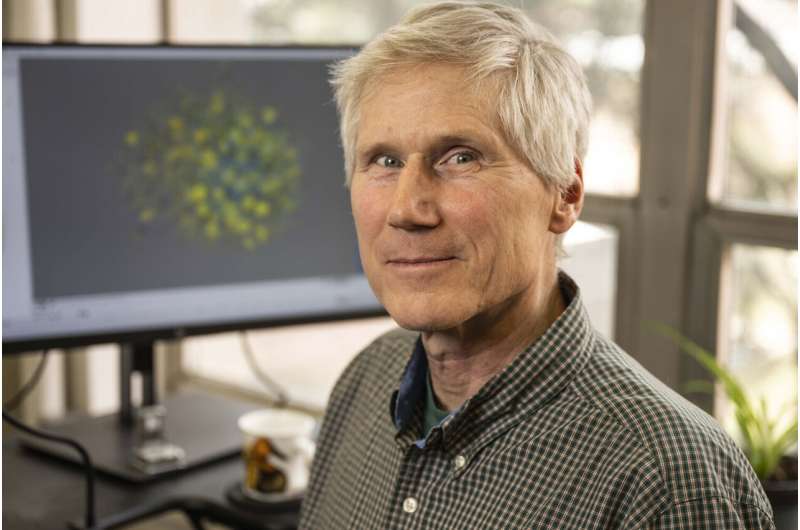This article has been reviewed according to Science X's editorial process and policies. Editors have highlighted the following attributes while ensuring the content's credibility:
fact-checked
peer-reviewed publication
trusted source
proofread
Researchers use AI to understand lung cancer cell vulnerabilities

A scientific team that includes University of Montana biologist Mark Grimes recently used artificial intelligence to better understand how protein groups in lung cancer cells regulate cell division and metabolism.
The work may lead to greater understanding of lung cancer vulnerabilities and future anti-cancer therapies. The findings were published in PLOS Computational Biology.
"We examined how cells respond to anti-cancer drugs used to treat lung cancer," Grimes said. "We used machine-learning algorithms to detect patterns in data that are difficult to see because our human brains are not all that great at seeing patterns in large spreadsheets."
He said lung cancer is still a major cause of mortality. New drugs to treat lung cancer can work for a while, but cancer cells may evolve and form new tumors, causing relapse. To solve this problem, attacking cancer cells with a combination of drugs could work, but only if researchers gain a better understanding of cancer cell weak points.
"The great thing about this work is that we've turned the patterns we discovered into networks that represent cell signaling pathways that are affected by cancer mutations and drugs that target mutated genes, called oncogenes," Grimes said. "This work takes this approach to the next level by looking at interactions between the pathways, which are groups of proteins that work together in the cell."
He said this gave his research team both higher-level and molecular-level views of the interactions between the pathways that cause cancer cells to divide and regulate their metabolism.
Grimes said cancerous tumors often have a hyperactive metabolism and limited supply of oxygen.
"So identifying links between these pathways presents opportunities to attach vulnerabilities in the import and utilization of nutrients in combination with other anti-cancer therapies."
Other partners in the research include Georgetown University; Moffit Hospital in Tampa, Florida; and the University of Manitoba.
More information: Karen E. Ross et al, Network models of protein phosphorylation, acetylation, and ubiquitination connect metabolic and cell signaling pathways in lung cancer, PLOS Computational Biology (2023). DOI: 10.1371/journal.pcbi.1010690




















